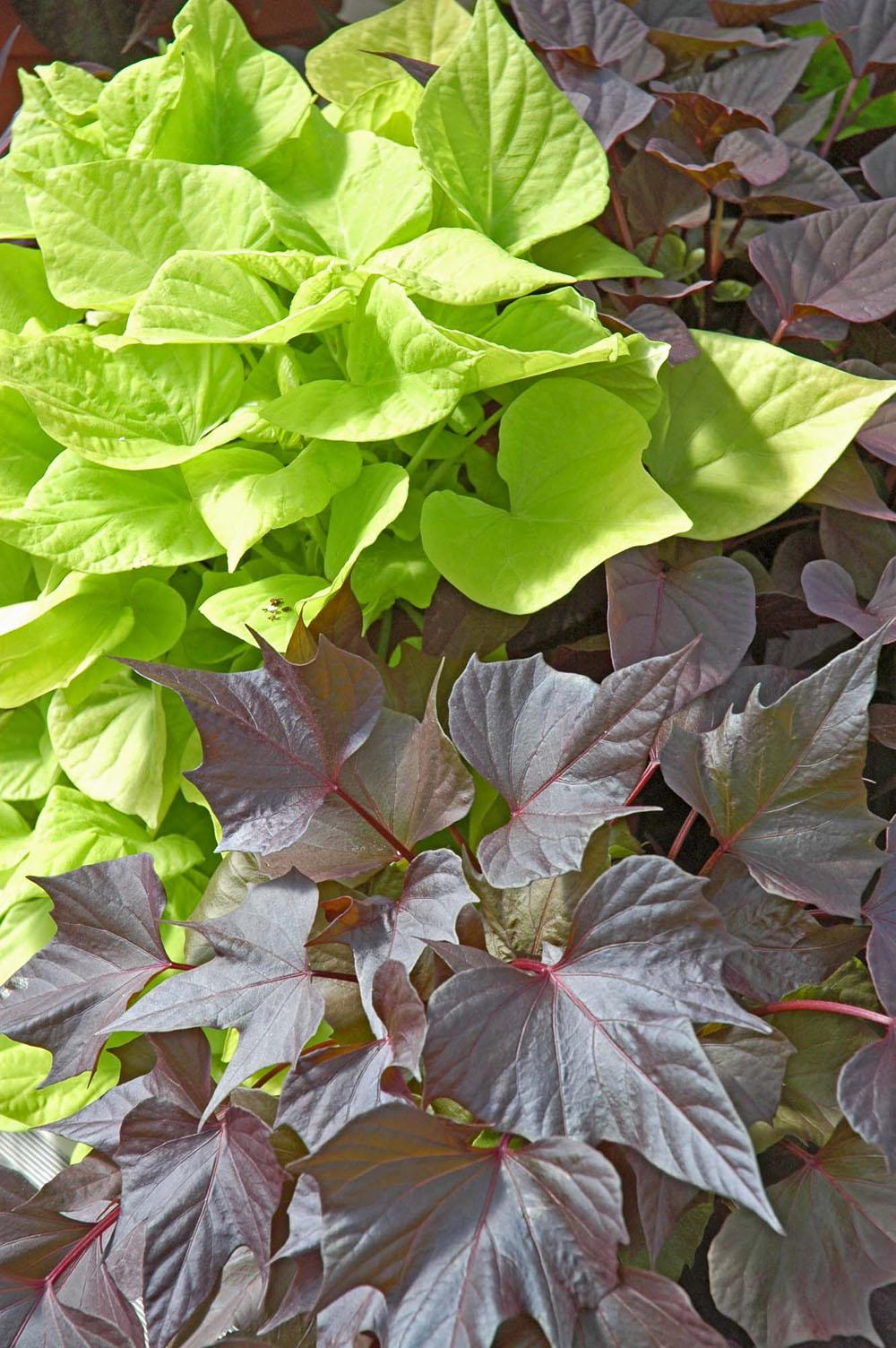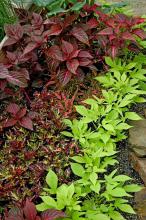Information Possibly Outdated
The information presented on this page was originally released on January 25, 2007. It may not be outdated, but please search our site for more current information. If you plan to quote or reference this information in a publication, please check with the Extension specialist or author before proceeding.
Choose ornamental sweet potatoes for perfect landscapes
By Norman Winter
MSU Horticulturist
Central Mississippi Research & Extension Center
The Sweet Caroline series of ornamental sweet potatoes have become the variety of choice for landscape color.
Producers and professionallandscapers alike call them “behaved” sweet potatoes because they are a little less kudzu-like than other sweet potatoes. The series was bred to produce short internodes, which results in a more compact plant with shorter leaves and less aggressive growth.
Once released, it seemed like it took forever for Sweet Caroline to reach the supply line in Mississippi, but now everyone should find some at local garden centers.
The J.C. Raulston Arboretum in North Carolina developed the Sweet Caroline series, then sold the rights to a company called Bodger Botancials.
The series boasts several colors and leaf shapes, and some will even display multiple colors on the same plant. There are five colors in what is known as the Sweet Caroline series: green and yellow, red, light green, bronze and purple. They all have deep-lobed leaves.
Then there is the Sweet Caroline Sweetheart cluster that feature heart-shaped leaves. Here you will find three colors: purple, light green and red.
The new selection for this year is called Bewitched. Bewitched is incredibly unique in that it is purplish-black, but it doesn't fit the typical shape of either the Sweet Caroline or Sweet Caroline Sweetheart. The leaves have many more serrations, giving it an almost maple-leaf look. There is nothing else quite like it.
Ornamental sweet potatoes like fertile, well-drained soil. This usually means amending the bed with 3 to 4 inches of organic matter. Incorporate 2 pounds of a slow-release, 12-6-6 fertilizer per 100 square feet while preparing the bed. Plant nursery-grown transplants at the same depth they are growing in the container, spacing 24 to 48 inches apart, depending on variety.
Give them supplemental water during the long growing season. Flea beetles are known to occasionally make them unsightly, so treat with a recommended insecticide at the first sign of damage. Prune as needed to keep sweet potato vines contained in their allotted space.
In addition to the various leaf shapes and colors in the Sweet Caroline series, I like their ability to really pack a punch in mixed containers and wall planters. I think we have been underutilizing sweet potatoes in this area.
By all means, don't forget about using them in large hanging baskets. Combine with plants like verbena, lantana, petunias and even tropicals like the mandevilla.
Lime green is still on the hot list of colors, and it seems to combine wonderfully with just about any color of flower you choose.
Sweet potatoes not only partner well with flowers in the landscape, but they also are dynamite with other foliage plants like coleus or iresine. They are unbeatable for cascading over walls.
What could be more Southern than growing sweet potatoes? It's just that now they have become one of our longest-performing plants in the landscape. Look for them this spring at a local garden center.









